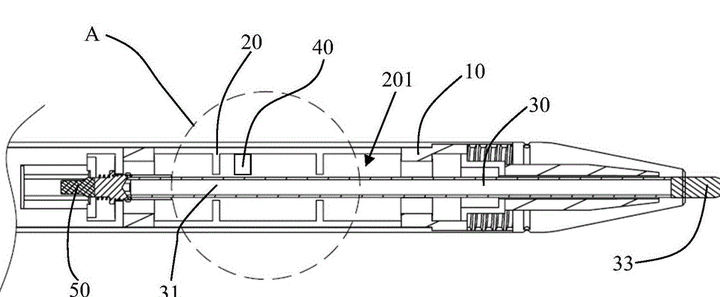上一講筆者和大家一起學習了如何使用 Tensorflow 構建一個卷積神經網絡模型。本節我們將繼續利用 Tensorflow 的便捷性完成 mnist 手寫數字數據集的識別實戰。mnist 數據集是 Yann Lecun 大佬基于美國國家標準技術研究所構建的一個研究深度學習的手寫數字的數據集。mnist 由 70000 張不同人手寫的 0-9 10個數字的灰度圖組成。本節筆者就和大家一起研究如何利用 Tensorflow 搭建一個 CNN 模型來識別這些手寫的數字。
數據導入
mnist 作為標準深度學習數據集,在各大深度學習開源框架中都默認有進行封裝。所以我們直接從 Tensorflow 中導入相關的模塊即可:
import tensorflow as tf
from tensorflow.examples.tutorials.mnist
import input_data
# load mnist data
mnist = input_data.read_data_sets('MNIST_data', one_hot=True)快速搭建起一個簡易神經網絡模型
數據導入之后即可按照 Tensorflow 的范式創建相應的 Tensor 變量然后創建會話:
# create the session
sess = tf.InteractiveSession()
# create variables and run the session
x = tf.placeholder('float', shape=[None, 784])
y_ = tf.placeholder('float', shape=[None, 10])
W = tf.Variable(tf.zeros([784, 10]))
b = tf.Variable(tf.zeros([10]))
sess.run(tf.global_variables_initializer())定義前向傳播過程和損失函數:
#definethenetandlossfunctiony=tf.nn.softmax(tf.matmul(x,W)+b) cross_entropy=-tf.reduce_sum(y_*tf.log(y))
進行模型訓練:
# train the model
train_step = tf.train.GradientDescentOptimizer(0.01).minimize(cross_entropy)
for i in range(1000):
batch = mnist.train.next_batch(50)
train_step.run(feed_dict={x: batch[0], y_: batch[1]})使用訓練好的模型對測試集進行預測:
# evaluate the model
correct_prediction = tf.equal(tf.argmax(y,1), tf.argmax(y_,1))
accuracy = tf.reduce_mean(tf.cast(correct_prediction, "float"))
print(accuracy.eval(feed_dict={x: mnist.test.images, y_: mnist.test.labels}))
預測準確率為 0.9,雖然說也是一個很高的準確率了,但對于 mnist 這種標準數據集來說,這樣的結果還有很大的提升空間。所以我們繼續優化模型結構,為模型添加卷積結構。
搭建卷積神經網絡模型
定義初始化模型權重函數:
# initilize the weight
def weight_variable(shape):
initial = tf.truncated_normal(shape, stddev=0.1)
return tf.Variable(initial)
def bias_variable(shape):
initial = tf.constant(0.1, shape=shape)
return tf.Variable(initial)定義卷積和池化函數:
# convolutional and pooling
def conv2d(x, W):
return tf.nn.conv2d(x, W, strides=[1, 1, 1, 1], padding='SAME')
def max_pool_2x2(x):
return tf.nn.max_pool(x, ksize=[1, 2, 2, 1],
strides=[1, 2, 2, 1], padding='SAME')搭建第一層卷積:
# the first convolution layer
W_conv1 = weight_variable([5, 5, 1, 32])
b_conv1 = bias_variable([32])
x_image = tf.reshape(x, [-1,28,28,1])
h_conv1 = tf.nn.relu(conv2d(x_image, W_conv1) + b_conv1)
h_pool1 = max_pool_2x2(h_conv1)搭建第二層卷積:
# the second convolution layer
W_conv2 = weight_variable([5, 5, 32, 64])
b_conv2 = bias_variable([64])
h_conv2 = tf.nn.relu(conv2d(h_pool1, W_conv2) + b_conv2)
h_pool2 = max_pool_2x2(h_conv2)搭建全連接層:
# dense layer/full_connected layer
W_fc1 = weight_variable([7 * 7 * 64, 1024])
b_fc1 = bias_variable([1024])
h_pool2_flat = tf.reshape(h_pool2, [-1, 7*7*64])
h_fc1 = tf.nn.relu(tf.matmul(h_pool2_flat, W_fc1) + b_fc1)設置 dropout 防止過擬合:
# dropout to prevent overfitting
keep_prob = tf.placeholder("float")
h_fc1_drop = tf.nn.dropout(h_fc1, keep_prob)對輸出層定義 softmax :
# model output
W_fc2 = weight_variable([1024, 10])
b_fc2 = bias_variable([10])
y_conv = tf.nn.softmax(tf.matmul(h_fc1_drop, W_fc2) + b_fc2)訓練模型并進行預測:
# model trainning and evaluating
cross_entropy = -tf.reduce_sum(y_*tf.log(y_conv))
train_step = tf.train.AdamOptimizer(1e-4).minimize(cross_entropy)
correct_prediction = tf.equal(tf.argmax(y_conv,1), tf.argmax(y_,1))
accuracy = tf.reduce_mean(tf.cast(correct_prediction, "float"))
sess.run(tf.initialize_all_variables())
for i in range(20000):
batch = mnist.train.next_batch(50)
if i%100 == 0:
train_accuracy = accuracy.eval(feed_dict={
x:batch[0], y_: batch[1], keep_prob: 1.0})
print("step %d, training accuracy %g"%(i, train_accuracy))
train_step.run(feed_dict={x: batch[0], y_: batch[1], keep_prob: 0.5})
print("test accuracy %g"%accuracy.eval(feed_dict={
x: mnist.test.images, y_: mnist.test.labels, keep_prob: 1.0}))部分迭代過程和預測結果如下:
經過添加兩層卷積之后我們的模型預測準確率達到了 0.9931,模型訓練的算是比較好了
-
神經網絡
+關注
關注
42文章
4774瀏覽量
100898 -
人工智能
+關注
關注
1792文章
47425瀏覽量
238964 -
機器學習
+關注
關注
66文章
8425瀏覽量
132771
發布評論請先 登錄
相關推薦
【正點原子STM32H7R3開發套件試用體驗】手寫數字、字母的識別
《DNK210使用指南 -CanMV版 V1.0》第四十七章 MNIST實驗
繪王原筆跡手寫:高度定制化手寫輸入解決方案

國產芯上運行TinyMaxi輕量級的神經網絡推理庫-米爾基于芯馳D9國產商顯板
國產芯上運行TinyMaxi輕量級的神經網絡推理庫-米爾基于芯馳D9國產商顯板
TensorFlow與PyTorch深度學習框架的比較與選擇
【Vision Board創客營連載體驗】TinyMaix進行手寫數字識別
微軟發布Windows版OneNote應用AI手寫矯正功能
手寫筆及筆尖彈力測試分選應用-磐石測控





 【連載】深度學習筆記13:Tensorflow實戰之手寫mnist手寫數字識別
【連載】深度學習筆記13:Tensorflow實戰之手寫mnist手寫數字識別











評論